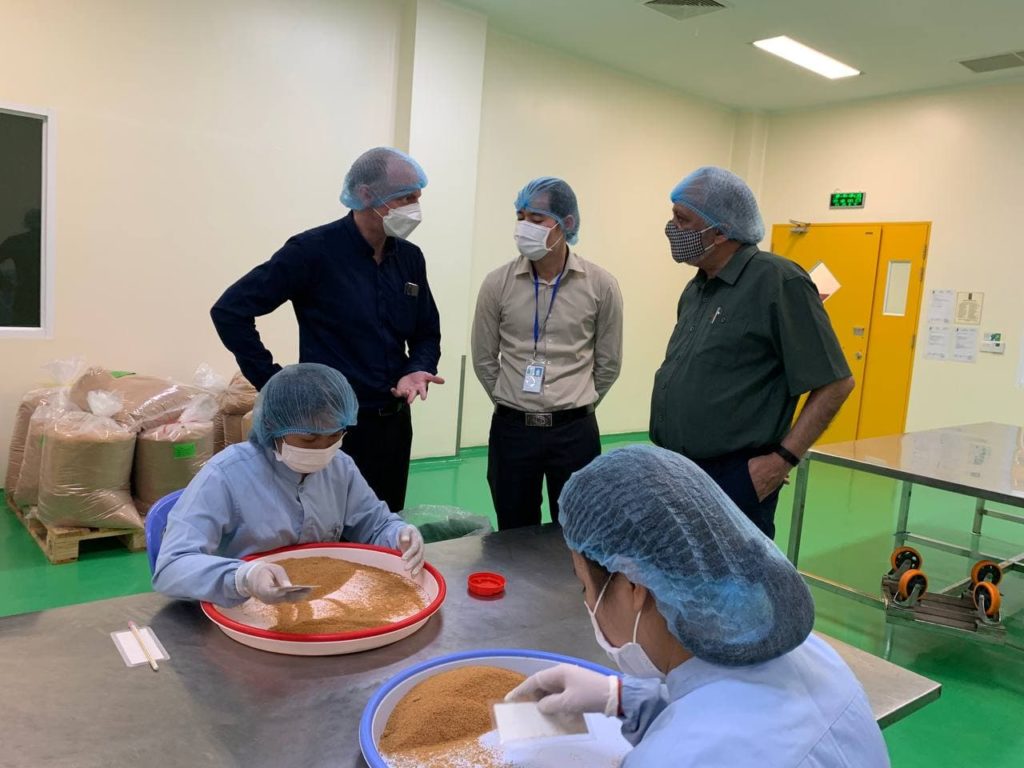


The director of Harvest II visits the Kep de Confirel site
Publish date: 05 January 2022 / Agriculture
At the start of 2021, the Feed the Future Cambodia Harvest II program funded by the American cooperation agency USAID began to support the mango sector developed by Confirel. As a sign of Harvest II’s interest in the company, its director in Cambodia, Mr. Namish, visited at the end of November our factory in Chom Chao in Phnom Penh where our products are processed and packaged then, in mid-December, went to the IGP Kampot pepper zone to discover our “ green factory ” in Kep designed for the eco-transformation of our raw materials.
In this plantation are cultivated pepper trees as well as fruits and plants necessary for the realization of our ranges of health and well-being products. Because ecotourism contributes to rural development, this agro-development site is also designed as a place for walking and vacationing.
Mr. Namish was welcomed there by Dr. Hay Ly Eang who explained to him the ideas that had guided the development of this exceptional space between sea and mountain which aims to be both a “green factory” , a site of history and memory, a “school” of nature and life as well as a paradise for the conservation of biodiversity.
A large part of its surface is of course dedicated to the organic cultivation of Kampot pepper and other plants and fruit trees, in particular mango trees, and occupied by workshops for processing raw materials. By surveying this site populated by animals – poultry, cows – and dug with lakes full of fish, Mr. Namish was able to see how the concepts of eco-development and circular economy to which Confirel adheres are applied in practice.
Plants, poultry, fish and people work together in this “green factory” to produce without destroying, by manufacturing on site, in the compost plant, all the necessary natural inputs – waste recycled from cow dung, herbs, tree leaves, solutions of leaf microorganisms, etc. – to obtain certified organic products at the end of the chain.
At the heart of this complex where a lake is populated by a local species of endangered turtle, a navigable semi-flooded plot offers a haven of peace to animal biodiversity. Many birds, which find calm and food there, nest and breed there. Cambodia is known to be home to a large number of bird species.
The site is also a place of history because one of the lakes was carved out by a bomb dropped by a B52 in the 70s and recalls the tragic history of Cambodia in the second half of the 20th century. Furthermore, the railway line which runs alongside the site was the scene of a murderous hostage-taking carried out in 1994 by the Khmer Rouge, said Dr Hay.
The development of this environment, both natural and industrious, has been particularly planned to accommodate young people and students wishing to know what sustainable development is.
The director of Harvest II was impressed by the guidelines which governed the organization of the site.



